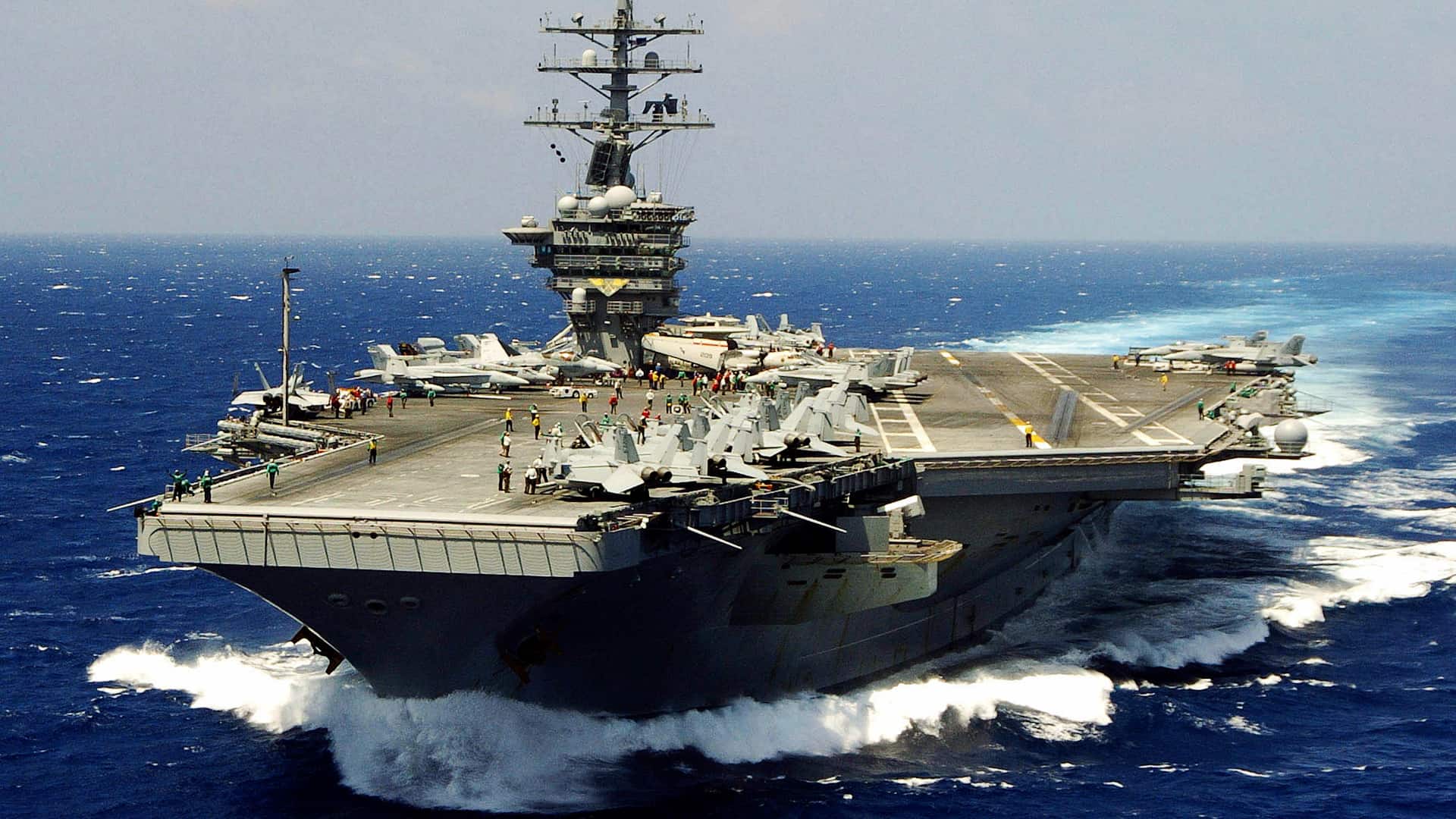
CREDIT: American Photo Archive Alamy Stock Photo
U.S. Deploys World’s Largest Aircraft Carrier to Latin America as Venezuela Announces Over 5,000 Russian Anti-Air Missiles
The United States has ordered the deployment of the USS Gerald R. Ford — the largest and most advanced aircraft carrier currently in service — to the Latin American and Caribbean region, in a move that expands U.S. military presence near Venezuela. The deployment includes the carrier strike group that accompanies the Ford, considered one of the most powerful naval formations in the world.
According to Pentagon spokesperson Sean Parnell, the operation aims to “detect, monitor, and disrupt illicit activities that threaten U.S. national security and stability in the Western Hemisphere.” The U.S. government has framed the recent maritime operations as part of a broader anti-narcotics effort, although regional analysts and diplomatic observers note that Washington has not publicly presented evidence linking recent ship strikes to drug trafficking.
The Gerald R. Ford Carrier Strike Group typically includes:
-
3 to 6 guided-missile destroyers
-
1 Ticonderoga-class cruiser
-
Support and logistics vessels
-
1 nuclear-powered attack submarine
-
And up to 90 aircraft, including fighter jets and early-warning command systems
Venezuela Responds with Military Readiness
Shortly after the U.S. announcement, Venezuelan President Nicolás Maduro said on national television that Venezuela has more than 5,000 Russian-made Igla-S anti-air missiles positioned across key military defense zones. The system is designed for low-altitude, mobile air defense and is considered one of Russia’s most widely-exported short-range surface-to-air missile platforms.
“Any military power in the world knows the capability of the Igla-S,” Maduro stated.
“Venezuela has no fewer than 5,000 of them deployed to guarantee peace, stability, and the protection of our territory.”
The announcement underscores Caracas’ view that the U.S. military operations in the Caribbean constitute a direct security threat. Venezuelan officials have also accused Washington of authorizing covert destabilization efforts through the CIA — a claim U.S. officials have not publicly addressed.
Rising Tensions in the Region
The deployment follows a series of U.S. air and naval strikes against vessels in Caribbean waters since August, actions the U.S. describes as targeting drug-trafficking networks. These strikes have resulted in dozens of deaths and have drawn criticism from human rights organizations and governments in the region.
Meanwhile, Venezuelan officials continue to publicly appeal for de-escalation. On Thursday, Maduro delivered a televised message in English, saying:
“Yes, peace. Peace forever. No crazy war, please.”
Regional and Global Implications
The presence of a U.S. nuclear-powered supercarrier so close to Venezuelan waters, combined with Venezuela’s public declaration of a large anti-air missile stockpile, represents a significant escalation in military signaling on both sides. Analysts warn that miscalculation or misunderstanding could rapidly increase the risk of confrontation.
Diplomatic channels remain open, but both governments are now communicating through military posture as much as through formal dialogue.
-

NEWSROOM
We are a dynamic daily channel dedicated to delivering essential insights on economics, business, and politics—empowering professionals and decision-makers to navigate a complex and fast-evolving world. Our content blends in-depth reporting, exclusive analysis, and strategic interviews to help readers stay informed, anticipate opportunities, and make smarter decisions. Connect with us at info@moneyinfocus.news
to collaborate or learn more.













